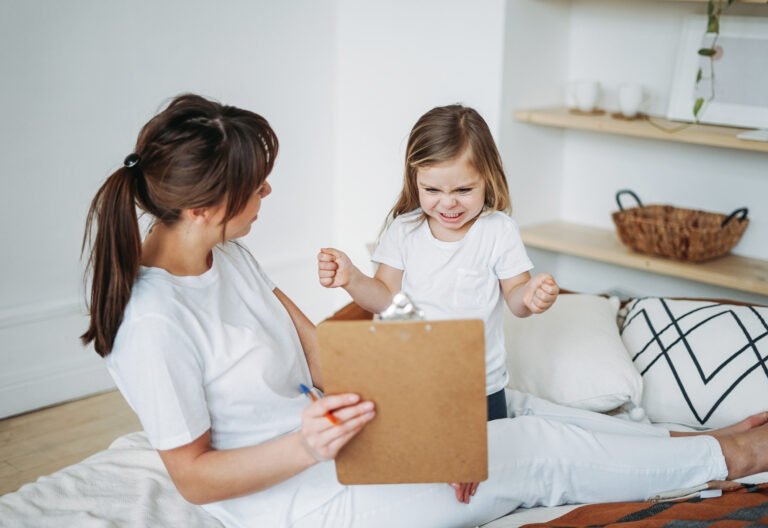Helping Kids Process the “Big Scary News” They Overhear

Have you ever walked into a room and caught a young child looking up at you with worry in their eyes—before you even realized they had overheard your conversation?
Whether it’s news about a family member’s illness, financial stress, or unsettling world events, children often overhear more than we think. And when that information is not age-appropriate or explained in a supportive way, it can lead to confusion, fear, and anxiety that lingers under the surface.
As parents, carers, and helping professionals, how do we support children when they’ve been exposed to “big scary news”? How do we calm their worries without dismissing them, and help them feel safe in a world that sometimes isn’t?
Why This Matters: Children Hear More Than We Realize
Children are naturally perceptive. Even when we try to speak in hushed tones or spell out certain words, kids pick up on more than just our words. They read body language, tone, and emotion. When they hear conflict, sadness, or uncertainty, their imaginations often fill in the blanks—sometimes with scenarios far worse than reality.
I’ve seen this many times. One child I supported began having sleep difficulties and stomach aches out of nowhere. After several gentle sessions, he finally whispered, “I think we’re going to lose our house.” His parents had never said this directly, but he had overheard whispered conversations late at night and sensed the tension in the air. He carried the fear silently, because he didn’t want to upset anyone.
Moments like this remind us how deeply children can internalize adult worries—and how important it is that we create safe opportunities for them to process what they’ve heard.
What Are Some Examples of “Big Scary News” Kids Might Overhear?
- A parent talking about losing a job or struggling to pay bills
- Conversations about divorce or separation
- News stories involving violence, war, or natural disasters
- A family member’s illness, injury, or death
- Discussions about crime, abuse, or community danger
- Talk of mental health struggles, including suicide or substance use
Even if children don’t fully understand the topic, they can still sense the emotional charge. And without proper context or support, they may form distressing conclusions that affect their behavior and wellbeing.
How Children React to Overheard Stressful Information
Reactions vary depending on the child’s age, temperament, and previous experiences. Some common responses include:
- Increased anxiety or clinginess
- Sleep disturbances or nightmares
- Physical symptoms like headaches or stomach aches
- Behavioral regression (bedwetting, tantrums, etc.)
- Withdrawal or acting out
- Asking repetitive or vague questions (“What if something bad happens?”)
How to Help Children Process Big, Scary News
1. Stay Calm and Grounded Yourself
Children regulate through co-regulation. If we respond with panic or shutdown, it can heighten their distress. Take a moment to center yourself before responding. Even saying, “That’s a really good question—let me think about how to answer that for you,” can buy time to gather your thoughts without dismissing the child’s concerns.
2. Create a Safe Space to Talk
Let the child know that it’s okay to ask questions, even about hard things. You might say:
“I wonder if you heard something that’s been worrying you.”
or
“Sometimes grown-ups forget that kids hear things too—want to talk about anything you’ve been wondering?”
Children are more likely to open up when they feel safe, unjudged, and not rushed.
3. Give Honest, Age-Appropriate Information
Avoid vague reassurances that dismiss the child’s feelings (e.g., “Don’t worry about it,” or “That’s not for kids”). Instead, provide honest, simple explanations that match their developmental level.
For example:
“Yes, Grandma is very sick. The doctors are helping her, and we’re all doing our best to support her. It’s okay to feel sad or worried.”
Let them know it’s normal to have big feelings—and that they won’t be facing them alone.
4. Watch Their Behavior, Not Just Their Words
Children often “tell” us how they’re feeling through behavior rather than language. If you notice changes in sleep, play, or mood, these may be signs they’re still processing what they heard. Look for ways to gently open the conversation again.
5. Use Play and Creative Expression
Art, drawing, sand trays, and imaginative play are powerful tools for children to express fear, process confusion, and regain a sense of control. I once worked with a young girl who wouldn’t talk about her parents’ divorce, but built two separate houses in the dollhouse over and over. It became a bridge for deeper conversation and emotional release.
6. Reassure with Routines and Presence
Predictability helps children feel safe. In times of uncertainty, reinforce familiar routines and spend extra moments connecting—bedtime stories, shared meals, or simple playtime can go a long way in restoring emotional security.
What Not to Do
- Don’t shut down the conversation. Avoid saying, “You don’t need to worry about that.”
- Don’t overload them with adult-level detail. Keep it simple and reassuring.
- Don’t assume they’ve forgotten about it just because they stopped talking. Children often circle back later.
- Don’t lie. Even “protective lies” can erode trust later when the truth comes out.
Frequently Asked Questions
What if I don’t know what to say?
It’s okay to say, “I don’t have all the answers, but I’m glad you told me. We’ll figure this out together.” Being emotionally present matters more than saying the perfect thing.
Should I bring it up, or wait for the child to talk?
If you sense a child has overheard something and is showing signs of worry, gently open the door. Children often won’t bring it up unless they feel safe to do so.
What if the child already has anxiety?
Children with pre-existing anxiety may be more prone to catastrophizing or “what if” thinking. Be extra mindful to validate their fears while gently redirecting their focus to what’s within their control and what is known to be true right now.
Can I use books or resources to help?
Yes! Bibliotherapy is a wonderful bridge. Choose picture books that address worry, change, or illness in gentle ways. Ask your school counselor or therapist for recommendations that suit the child’s age and emotional level.
Final Thoughts: Helping Kids Feel Safe in a Grown-Up World
Children don’t need us to shield them from every difficult truth—but they do need us to guide them through it with honesty, warmth, and consistency. When they overhear “big scary news,” it’s a chance for us to model emotional resilience and strengthen the relationship.
In my work, I’ve seen time and again how a child’s internal world can soften once they are given space to talk, play, cry, or even just sit beside a trusted adult who says, “I’m here. I get it. And you’re safe with me.”
That’s the real work—and it begins not with having all the answers, but with showing up.
Want More Tools Like This?
If you’re looking for ready-to-use, trauma-informed tools to support children through challenging emotions, change, and anxiety, the All Therapy Resources Membership is here to help. With over 1,000 printables, games, visuals, and calming activities, you’ll always have something practical and purposeful at your fingertips.
Visit https://membership.alltherapyresources.com to explore the full library of resources and join a growing community of professionals making a difference.













